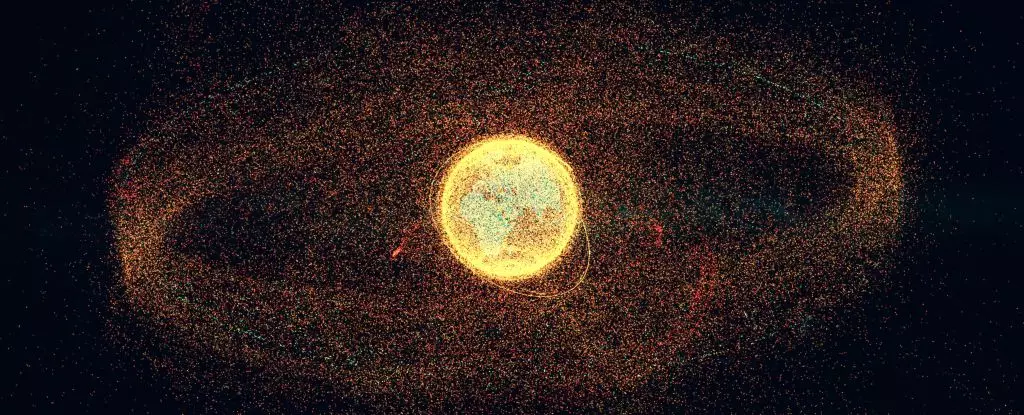As history often illustrates, mankind’s endeavors to conquer the skies frequently sow the seeds of unforeseen complications. In the case of Earth’s orbital space, we stand on the precipice of an escalating crisis. Recent reports from the European Space Agency (ESA) paint a dire picture: space debris is proliferating at an alarming rate. The fundamental problem lies in our relentless pace of satellite launches, which far outstrips the rate at which they are being decommissioned or safely removed from orbit. This ever-increasing collection of derelict satellites and fragmented spacecraft threatens to transform our celestial environment into a hazardous minefield.
The phenomenon known as the Kessler syndrome illustrates the potential repercussions of this exponential growth in debris. Named after NASA scientist Donald J. Kessler, the syndrome hypothesizes that once a certain density of debris is reached, collisions between these objects will produce even more fragments, leading to a chain reaction of destruction. While we have not yet reached this critical juncture, the current trajectory suggests an inevitable increase in the likelihood of collisions, underscoring an urgent need for remedial action.
Satellite Saturation and Its Implications
As of the latest ESA report, approximately 40,000 objects are currently tracked in Earth’s orbit, out of which merely 11,000 are operational satellites. This stark contrast illustrates the rampant issue of space debris, as the number of non-functioning satellites and fragments balloons to overwhelming proportions. The ESA estimates reveal a staggering 54,000 objects larger than 10 centimeters, alongside an estimated 1.2 million pieces varying from 1 to 10 centimeters, and a staggering 130 million pieces less than a centimeter in size.
While these smaller pieces might initially seem inconsequential, the potential for catastrophic damage they present is significant. Even pinprick-sized debris traveling at orbital velocities can cripple vital assets like the International Space Station or disrupt essential commercial satellite operations. Furthermore, collisions are not the sole culprits of fragment creation; unplanned events, such as explosive failures or structural degradations, also contribute significantly to the debris problem. In 2024 alone, non-collisional fragmentation events produced an alarming 2,633 new pieces of space junk.
The Path to Mitigation: Current Trends and Challenges
Despite the overwhelming obstacles, there exists a glimmer of hope. The ESA has reported improvements in the controlled re-entry of defunct rocket bodies and satellites, suggesting some progress towards mitigating the debris issue. In fact, there has been a notable rise in the percentage of satellites and rocket bodies complying with the re-entry standards established in previous years. Approximately 90% of rocket bodies in low-Earth orbit have adhered to the guideline of vacating their orbits within a 25-year time frame, with over half of these departures executed in a controlled manner. This compliance is instrumental in reducing the long-term impact of space debris.
However, improving re-entry compliance is just one part of a multifaceted approach needed to tackle the debris conundrum effectively. The adoption of an active debris removal strategy is paramount. As it currently stands, we cannot solely rely on future reductions in launch frequencies to alleviate the existing constellation of junk circling our planet. Active cleaning initiatives represent an indispensable component of a long-lasting solution.
Collaboration: The Key to a Sustainable Solution
A successful endeavor to clean up Earth’s orbits will require a paradigm shift in international cooperation. The challenges of space debris do not recognize geopolitical boundaries; thus, a united effort is essential. Nations must come together, pooling resources and expertise, to pioneer innovative technologies designed specifically for debris removal.
Enterprise collaborations could spark a new era in space exploration, where the dangers posed by human-generated debris are addressed proactively, rather than reactively. For instance, missions equipped with robotic arms or nets to capture derelict satellites could significantly reduce the perilous clutter in orbit. Moreover, promoting stricter policies and standards for satellite design and operational life could contribute to a cleaner space environment.
As we continue this bold exploration of the final frontier, the preservation of Earth’s orbital space must not be viewed merely as a bureaucratic obligation but as a moral imperative. The allure of the cosmos should not be tarnished by careless oversight. Acknowledging our responsibility to safeguard this celestial domain for future generations transforms the narrative from that of reckless abandon to one of stewardship. The time to act is now; otherwise, we risk losing our celestial playground to negligence.

